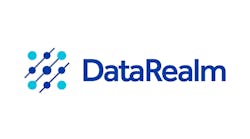The WirelessHART community has been collectively rubbing its hands with glee for the last couple of years at the prospect of being able to release the “stranded” capabilities of all those HART transmitters, reckoned to number some 20 million, which are installed across the world’s process plants in systems whose hosts currently have no HART capability. However, to Harry Sim, the former NASA shuttle payload director whom readers last met as global vice-president of marketing for Honeywell IPS, 20 million seems a relatively paltry number. He’s got his sights set on an order of magnitude larger population of process measurement devices whose only interaction with the outside world is currently via a technician’s clip board.
Innovation
Sim joined, indeed launched, Cypress Systems, the Cypress Semiconductor subsidiary, as CEO in September 2006 with a brief from the parent company’s president and CEO TJ Rodgers to come up with innovative ways of exploiting existing technologies and intellectual property. Cypress Systems is in fact the eighth Cypress Semiconductor start-up based on a venture capital model that U.K. readers may well find reminiscent of the early days of the Eurotherm Group. “The aim,” says Sim, who has a share of the business, “is to take the best of Silicon Valley technology and apply it to legacy industrial plant in places where it’s under-used.”
Ironically Sim found that under-use right under his nose as he wandered round the wafer fabs and biotech facilities of the Bay Area. He noted that, rather than using the state of the art DCSs and SCADA systems with which he was familiar, these leading-edge facilities relied largely on dial gauges, clip boards and expensively trained workers in white coats to record and track critical parameters.
Avoiding disruption
Why do such facilities so often persist in using such outmoded methods? Not so much because of the actual cost of retrofitting state-of-the-art instrumentation systems, although that, of course would, be very considerable, but because of the upheaval involved in interfering with existing installations, many of which carry the additional burden of requiring mandatory external validation of any changes to their existing configuration.
Hence the huge attraction―the words “no-brainer” recur repeatedly in Sim’s and his early adopters’ comments―of the extraordinarily simple idea of a “Wireless Gauge Reader” that can be clamped on to the face of an existing dial gauge and can transmit its data to some remote central logger or to a “conventional” DCS or SCADA system―no breaking seals, no revalidation, no running wires, no new software and virtually no retraining.
That product went on limited release in August 2007 and was enthusiastically taken up by a number of semiconductor and biotech companies who immediately recognized its potential for dramatically reducing their requirement to record data manually and hence to improve their operating and maintenance procedures. Since then there have been a number of revisions and the system is to be formally launched later this month with a Class 1, Div 2 rating.
The Wireless Gauge Reader actually comprises three major components: the Gauge Reader itself, which clamps over the existing dial gauge and provides a digital readout on its local display together with a wireless output; a wireless receiver/server dubbed the “Blue Box”; and a handheld configuration tool. Configuration, says Sim, takes a matter of minutes and consists, in effect, of instructing the device about what it is actually looking at. In the latest release, however, that process has been largely automated with the device having the intelligence to make an educated guess at what it is reading, leaving the technician to confirm or if necessary modify what it presents. Complementary devices are also being introduced to extract data from other “stranded” sensors and transducers and transmit it wirelessly over the same network.
Proprietary wireless
After his experience of previous standards processes, Sim has chosen to keep well out of the current WirelessHART/SP100 debate, using Cypress’ own proprietary 2.4GHz low- power hybrid mesh network in which battery life is extended to between three and five years by an arrangement in which not every node is required to act as a router. Range is typically 200 ft per hop but “extenders” can stretch that up to between 800 ft and 1,000 ft.
The base receiver, which can support up to 128 devices, scalable in further increments of 128, incorporates its own relational database capable of storing up to three years’ data and provides real-time graphing and alerts to pagers or SMS text messaging to cell phones and PDAs. It also has the facility to interface with automation systems via OPC, SECS/GEM or BACNet, while the integral web server allows data to be accessed from any authorized LAN-connected PC.
Almost certainly, the most compelling argument in favour of the Cypress solution compared with possible alternatives is cost. Although the cost per point, at some $1,250, looks high compared with a typical $300 wired sensor, that is the whole cost, including installation, whereas labor, compliance, panel termination and downtime can easily bring the total installed cost of the comparable wired sensor to $4,000. “At that price we can do the whole suite for a fraction of the cost of installing a new automation system,” says Sim.
Repeat orders
That seems to be confirmed by early adopters such as Micr el, Cypress Semiconductor, Genentech, Novellus and Stanford University. Many have placed repeat orders, while the last two have agreed to open their facilities to visitors to view the technology in action.
With a potential market that Sim reckons could be some 200 million gauges worldwide, his biggest challenge could be how to find suitable channels to reach them. The 200 wafer fabs in the U.S. and 400 worldwide are not too difficult to address directly, nor the even smaller number of biotech and pharmaceutical plants. However, addressing the broader market is likely to require a combination of distribution, OEM deals and, who knows, tie-ups with his old friends in the process automation field.



